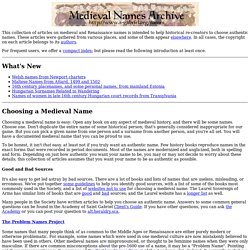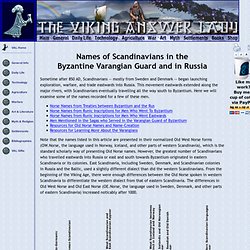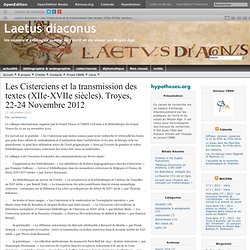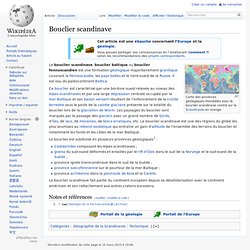

Bibliography norwegian history 800 1800. Scandinavian historiography bibliography. Shami Ghosh, last updated April 2011 This bibliography is a greatly reduced version of what appears in my monograph (listed below), which functions in part as a handbook and guide to this scholarship, and to which those readers are therefore referred who desire further assistance with finding material on specific topics or guidance on what the scholarship contains.

Some works on other parts of Scandinavia are included beyond Norway (and Iceland insofar as much of the Norwegian historiography was written or preserved there), as are some studies of literature produced outside Scandinavia; these topics, along with scholarship produced before c. 1980, are only very selectively represented. For technical reasons, the hooked ‘o’ is rendered as ‘ö’ throughout. Suggestions and additions (and questions) are very welcome: email me at shami.ghosh@utoronto.ca. Abram, Christopher. 2001. Northern Europe and the Atlantic World - Atlantic History. There are few specific reference works and bibliographies on the study of northern Europe and the Atlantic world.

The best research method is therefore to track references in the notes of reliable works in the field. For research produced by northern European scholars, there is also the digitalized national historical bibliographies for Denmark, Dansk Historisk Bibliografi; for Norway, Norsk Historisk Bibliografi; for Sweden, Svensk Historisk Bibliografi; and for Finland, Fennica. Moreover, literature concerning the Danish West Indies is presented in Highfield and Tyson 1994 and by the website Virgin Island History, which also introduces archival sources concerning the Danish West Indies and West Africa. The comprehensive bibliography in Justesen 2005 is the best place to begin locating literature about Danish trade and settlement in West Africa. Gts2 VikBibl2004. Livonian Brothers of the Sword. Following their defeat by the Samogitians and Semigallians in the Battle of Schaulen (Saule) in 1236, the surviving Brothers merged into the Teutonic Order as an autonomous branch and became known as the Livonian Order.

History[edit] Albert, Bishop of Riga (or Prince-Bishop of Livonia), founded the Brotherhood in 1202 to aid the Bishopric of Livonia in the conversion of the pagan Livonians, Latgalians and Selonians living across the ancient trade routes from the Gulf of Riga eastwards. From its foundation, the undisciplined Order tended to ignore its supposed vassalage to the bishops. SCAHeraldry - home. Database of medieval names. Medieval Names Archive. This collection of articles on medieval and Renaissance names is intended to help historical re-creators to choose authentic names.

These articles were gathered from various places, and some of them appear elsewhere. In all cases, the copyright on each article belongs to its authors. For frequent users, we offer a compact index; but please read the following introduction at least once. Ant2007-0182a - eventfile244.pdf.
Cartes et géographie. Héraldique. Names of Scandinavians in the Byzantine Varangian Guard and in Russia. Sometime after 850 AD, Scandinavians -- mostly from Sweden and Denmark -- began launching exploration, warfare, and trade eastwards into Russia.

This movement eastwards extended along the major rivers, with Scandinavians eventually travelling all the way south to Byzantium. Here we will examine some of the names recorded for a few of these men. Note that the names listed in this article are presented in their normalized Old West Norse forms (OW.Norse, the language used in Norway, Iceland, and other parts of western Scandinavia), which is the standard scholarly way of presenting Old Norse names. However, the greatest number of Scandinavians who travelled eastwards into Russia or east and south towards Byzantium originated in eastern Scandinavia or its colonies. East Scandinavia, including Sweden, Denmark, and Scandinavian colonies in Russia and the Baltic, used a slightly different dialect than did the western Scandinavians.
Acknowledgements. Medieval Danish and European Families. Printemps 2006 Sociétés nordiques en politique (XIIe-XVe siècles) Les Cisterciens et la transmission des textes (XIIe-XVIIe siècles). Troyes, 22-24 Novembre 2012. Ce colloque international, organisé par le Grand Troyes et l’IRHT s’est tenu à la Médiathèque du Grand Troyes du 22 au 24 novembre 2012.

Il s’ouvrait sur ce postulat : « les Cisterciens sont moins connus pour avoir recherché et retravaillé les textes que pour leurs efforts de centralisation et d’unification dans l’architecture et les arts, la liturgie et la vie quotidienne, et pour leur utilisation active de l’écrit pragmatique », bien qu’il existe de grandes et riches bibliothèques cisterciennes, contenant des textes fort rares ou inattendus.
Ce colloque a été l’occasion d’entendre des communications sur divers sujets : - l’organisation des bibliothèques : « Les calendriers de lectures hagiographiques chez les Cisterciens », par François Dolbeau ; « Livres et bibliothèques dans les monastères cisterciens de Belgique et France du Nord, XIVe-XVe siècles », par Xavier Hermand ; Ces journées ont également été l’occasion d’évoquer les réseaux de circulation de ces textes. Imprimer ce billet. Bouclier scandinave. Un article de Wikipédia, l'encyclopédie libre.

Carte des provinces géologiques mondiales avec le bouclier scandinave centré sur la Scandinavie en orange. Le bouclier scandinave, bouclier baltique ou bouclier fennoscandien est une formation géologique majoritairement granitique couvrant la Fennoscandie, les pays baltes et le nord-ouest de la Russie. Il est issu du paléocontinent Baltica. The Viking Answer Lady Webpage.